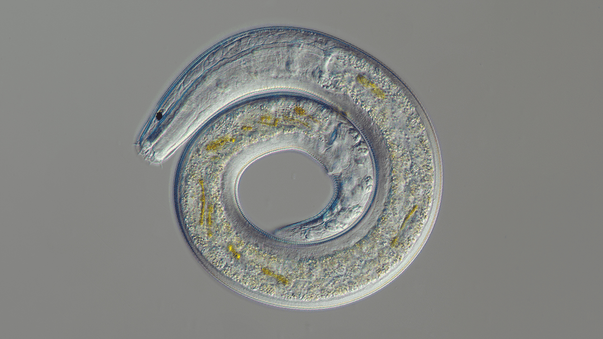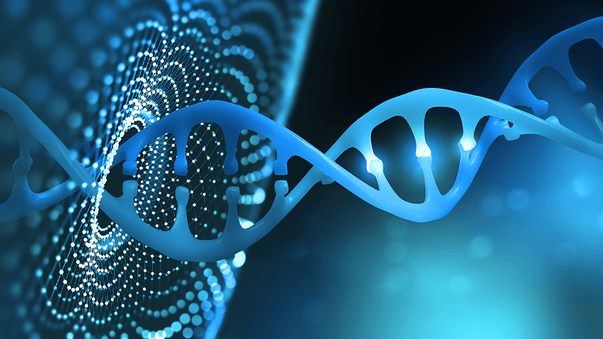Future Nanotechnology for Neurodegenerative Disease

“Perhaps have discovered a new target for someday intervening in neurodegenerative diseases with novel therapeutics,” says Johns Hopkins Medicine professor Jeffrey Rothstein, commenting on successful preliminary experiments to deliver corrective proteins via nanoparticles to replace missing proteins needed for repairing defective neural connections (see below).
The prospect to fix brain defects by supplying needed proteins via nanoparticles sounds awesome, but of course this research work will need time to move from the lab to clinical practice. So, someday we may have a cure for neurodegenerative diseases like Alzheimer’s, but you shouldn’t hold your breath.
In the meantime, if you are prone to depression, maybe try red wine and chocolate. A new study has revealed that the plant compound resveratrol, which is found in red wine, displays anti-stress effects by blocking the expression of an enzyme related to the control of stress in the brain. Similarly, eating dark chocolate may positively affect mood and relieve depressive symptoms, a new study looking at whether different types of chocolate are associated with mood disorders has found.
Nanoparticles deliver corrective proteins to repair defective neural connections. Johns Hopkins Medicine researchers have conducted proof-of-concept experiments that show they could deliver corrective proteins via nanoparticles to replace missing proteins needed for repairing defective neural connections. In a paper published in Nature Neuroscience, the researchers describe experiments with lab mice and show that a protein produced by some brain cells, which plays a specific role in directing the formation of connections among neurons needed for learning and forming new memories, can be reproduced by injecting nanoparticles if missing. The researchers repeated these experiments with human neurons too.
Detecting neural signals throughout the brain. Scientists at Howard Hughes Medical Institute have developed a new way to track neural activity. The new technique, called Voltron, described in a study published in Science, lets researchers track neuron activity in living animals more precisely and for far longer time periods than was once possible. The scientists used a specially engineered protein that changes intensity when specific neurons switch on, allowing researchers to detect neural signals throughout the brain. That kind of data makes it easier to study the complex ways neurons coordinate behavior.
Molecular switch turns on anti-inflammatory function in immune cells. Researchers at University of Illinois at Chicago have identified a molecular switch that causes immune cells known as macrophages to clean up cellular debris caused by infections. The findings, published in PNAS, indicate that a molecule called Gas6 induces macrophages to perform an anti-inflammatory role, which could serve as a potential drug target for drug makers. According to the researchers, harnessing the anti-inflammatory function of macrophages using the Gas6 switch holds great potential for treating diseases ranging from heart disease to cancer to rheumatoid arthritis, where inflammation is a key underlying feature.
Engineered bacteria produce nanowires for biological sensors. Microbiologists at University of Massachusetts at Amherst have reported advances in the quest to develop electrically conductive protein nanowires in the bacterium Geobacter sulfurreducens for use as chemical and biological sensors. In a study published in ACS Synthetic Biology, the microbiologists describe how they built a strain of G. sulfurreducens that made synthetic nanowires that could be controlled by introducing a genetic circuit.
Zooming on the genetic mechanisms for limb regeneration in fish. Michigan State University scientists have argued that gar, a freshwater fish able to regenerate its limbs, could reveal genetic blueprints for limb regeneration in people. In a research paper published in PNAS, the scientists pinpointed the genes and the mechanisms that drive limb regrowth in gar. The genes responsible for this action in fish also are largely present in humans, but the genetic mechanisms that activate these genes are missing in humans. Searching for ways to trigger similar genetic mechanisms in humans could, according to the scientists, lead to revolutionary medical advances.
Enhancing the immune system to fight leukemia. Researchers at Case Western Reserve University have developed a new combination treatment regimen that enhances the immune system's ability to kill leukemias that do not respond to standard treatments. The regimen, described in a study published in Cancer Immunology Research, includes a therapeutic antibody designed to act like a bridge connecting cancer cells to natural killer cells, drawing natural killer immune cells to cancer cells.
More Articles
Don't miss a beat! In our Pulse Newsletter, Thrivous curates the most important news on health science and human enhancement, so you can stay informed without wasting time on hype and trivia. It's part of the free Thrivous newsletter. Subscribe now to receive email about human enhancement, nootropics, and geroprotectors, as well as company news and deals.
Read more articles at Thrivous, the human enhancement company. You can browse recent articles in Thrivous Views. See other Pulse Newsletter articles. Or check out an article below.
-
Anti-Aging from Worm Experiments to Human Therapies
A protein known as LIN-53 has been found to play an important role in healthy aging (see below), in nematode ...
-
First CRISPR Trial to Edit DNA in Human Body
Biotech companies Allergan and Editas Medicine have announced that the Brilliance Phase 1/2 clinical trial of AGN-151587 (EDIT-101) is open for ...


